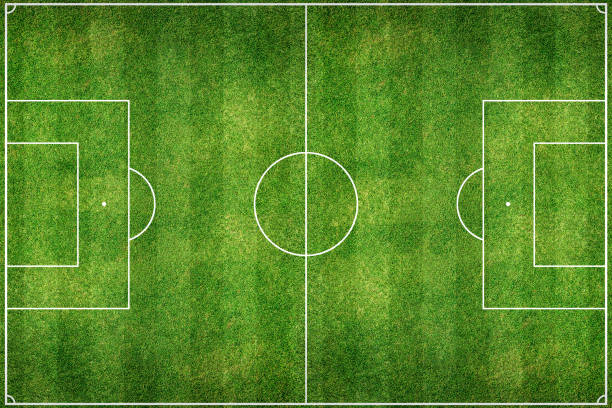
Football is a sport that has captured the hearts of millions across the globe. But as it has evolved, several variants of the game have emerged, one of the most popular being futsal. While both football and futsal share a common origin, the two sports offer distinct experiences. In this article, we'll explore the key differences and similarities between futsal and football, with a special focus on their rising popularity in India.
The Playing Field
One of the most noticeable differences between football and futsal lies in the size of the playing area. Traditional football is played on a massive grass field, usually around 105 meters long and 68 meters wide. This gives players ample space to run, pass, and position themselves strategically. Futsal, on the other hand, is played on a much smaller indoor court—similar in size to a basketball court (usually around 40 meters by 20 meters). This drastically changes the dynamics of the game.
In India, where space for large football grounds is often limited, futsal has gained popularity in urban areas. Many sports complexes now offer futsal courts, providing a convenient way for football enthusiasts to stay connected to the sport in a more compact, accessible format.

Team Size and Duration
Football typically features two teams of 11 players each, with a match lasting 90 minutes (split into two halves of 45 minutes). Futsal, by comparison, involves smaller teams—usually five players per side—and shorter match durations, typically 40 minutes split into two halves of 20 minutes each.
The smaller team size in futsal means that players often have to be versatile, adapting to both offensive and defensive roles. The smaller field and fewer players also mean more touches on the ball, making futsal a fast-paced and action-packed game. It’s no surprise that futsal in India is becoming an exciting alternative for those looking for quicker, more intense matches.
Playing Surface and Ball
Another difference is the playing surface. Football is typically played on grass or artificial turf, while futsal is played on hard, flat surfaces such as wood or artificial flooring. This affects the ball's behavior and, consequently, how the game is played.
In futsal, the ball is smaller and heavier, designed to stay low and allow for tighter control. The ball used in futsal also has less bounce, facilitating the rapid passing and close dribbling that characterize the game. Football, in contrast, uses a larger, lighter ball that is more suitable for long passes and high-speed runs across the vast field.
This difference in the ball's size and weight makes futsal ideal for honing skills like ball control, quick thinking, and precision—all of which can benefit football players. Football in India benefits from the popularity of both formats, as aspiring players often transition between the two to sharpen their overall skill set.
Pace and Style of Play
In traditional football, the larger field size and longer game time mean that tactics, endurance, and positioning are key. Players often have more time to think, and matches can include moments of slower build-up before a burst of action. In contrast, futsal’s smaller playing area and shorter game duration make for a much faster-paced game. There’s little room to breathe, as the game is constantly flowing, with quick passes and sudden changes in direction.
Tactically, futsal emphasizes creativity and agility. Players need to think quickly and adapt to tight spaces, which makes the game ideal for developing technical skills. This fast, skill-based style has led to futsal being used as a training ground for many top footballers worldwide.
Scoring and Substitutions
While the ultimate goal—scoring more goals than the opposition—remains the same in both football and futsal, the scoring patterns often differ. Football games may end with scores like 2-1 or 1-0 due to the defensive nature of the sport and the larger playing field. Futsal, however, tends to see higher scores due to the smaller field, faster pace, and shorter game time.
When it comes to substitutions, football usually allows a limited number of changes (three to five, depending on the competition). Futsal, on the other hand, permits unlimited substitutions, allowing for frequent player rotations to maintain the high intensity of the game.
Global and Indian Context
Football is a global phenomenon, with leagues and tournaments such as the English Premier League, UEFA Champions League, and the FIFA World Cup attracting massive audiences. Football in India is also growing, with the Indian Super League (ISL) giving rise to a new generation of fans and players.
While futsal doesn’t enjoy the same level of global recognition, it has steadily gained popularity. In India, futsal leagues and tournaments have started cropping up, and the sport is becoming an accessible way for urban dwellers to experience football-like excitement in a shorter time-frame.
Conclusion: Finding the Right Ball for Your Game
Whether you're a fan of football or futsal, one thing remains constant—choosing the right ball can significantly impact your performance. Nivia Sports offers a range of footballs and futsal balls that are designed to enhance your game.
For football, the Nivia Shastra 2.0 is a popular choice, known for its durability and excellent flight. The Nivia Dominator 3.0 is another standout, designed for all-weather conditions, making it perfect for India's unpredictable climate.
If futsal is more your speed, Nivia has you covered with its Force Futsal ball, crafted with a reduced bounce for better control in tight spaces.
Whether you're playing football or futsal in India, Nivia’s range of balls ensures that you're always equipped to perform at your best.







